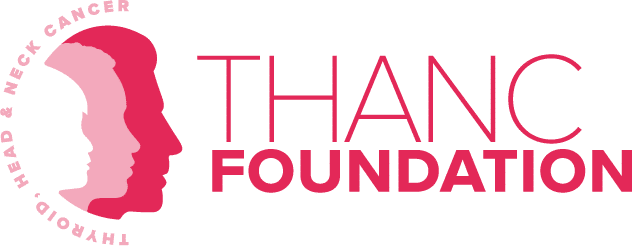There’s no doubt that the public health crisis that has arisen from the onset of COVID-19 has changed how we go about our daily lives. However, it has also impacted preventative care initiatives like the oral cancer awareness campaign that takes place in April. The THANC Foundation must indefinitely postpone our annual oral cancer screening.
About 53,260 people will be diagnosed with oral cavity or oropharyngeal cancer this year. That’s 145 people each day, or 1 person every 10 minutes.
Our organization, along with others across the nation and around the world perform free public screenings as a measure of prevention and early diagnosis for oral cancer. As with most cancers, early detection offers the best hope for a cure. This service is an attempt to help people who may be unaware of the symptoms of oral cancer or who may not otherwise have access to a screening. Since screenings usually take place in public spaces or in group settings, the threat of spreading coronavirus has eliminated this as a responsible option for the time being. However, you can still perform a simple routine to check for oral cancer in the comfort of your own home.

Who is at Risk for Developing Oral and Oropharyngeal Cancer?
Most cases of this serious disease are linked to smoking, smokeless tobacco, excess alcohol consumption and the human papilloma virus (HPV). The risk is significantly higher in those who both drink significant amounts of alcohol and smoke or use tobacco products, in tandem.
A person’s age, diet and amount of exposure to the sun also increases their risk.
- Oral cancer most often occurs in people over the age of 40.
- A diet low in fruits and vegetables may also play a part in the development of oral or other cancers.
- Prolonged sun exposure can cause lip cancer.
The Simple Oral Cancer Self-Screening
Here are 7 steps to self-screen at home in under 5 minutes.
- Examine yourself in the mirror with a bright light. Check for unusual swelling, lumps and bumps.
- Pay attention to your skin and note any changes in the color or size of sores, moles or other growths.
- Press your fingers along the sides and front of your neck. Do you feel any tenderness or swelling?
- Pull your lower lip out and look for sores. Use your thumb and forefinger to feel the upper and lower lips for lumps or texture changes.
- Examine the insides of your cheeks for red, white or dark patches. Gently squeeze and roll each cheek between your index finger and thumb to check for bumps and tenderness.
- Tilt your head back to check the roof of your mouth. Run your finger along the surface. Do you feel or see any unusual lumps or discoloration?
- Check out each side of your tongue. Look at the top, bottom, left and right sides of your tongue—including the soft tissue under it. Once again, check for swelling, discoloration or unusual lumps.
If you have questions about oral cancer, self-screening or anything related to optimum dental health, you should contact your dentist or an ENT.
Symptoms of Oral and Oropharyngeal Cancer
- A sore, irritation, lump or thick patch in the mouth, lip, or throat.
- A white or red patch in the mouth.
- A feeling that something is caught in the throat.
- Difficulty chewing or swallowing.
- Difficulty moving the jaw or tongue.
- Numbness in the tongue or other areas of the mouth.
- Swelling of the jaw that causes dentures to fit poorly or become uncomfortable.
- Pain in one ear without hearing loss.
- A painless lump on the side of the neck
Consult Your Doctor

A person who has any of these symptoms for more than 2 weeks should consult a dentist or doctor for a comprehensive head and neck and oral cancer exam. Most often, symptoms like those listed above do not mean cancer. An infection or another problem can cause the same symptoms. Regardless, it’s important to have the symptoms checked out. If it is cancer, it can be treated more successfully if it’s caught at an early stage.
Every 90 minutes someone in the United States dies of oral cancer. That’s an estimated 10,750 people in 2020.
It’s important to stay educated and up-to-date regarding the current impact of the coronavirus. Local, state, and federal governments are putting new precautions in place each day. Check resources like the CDC and WHO websites. They maintain an updated list of affected areas and preventative measures to take to avoid contracting and spreading COVID-19.



